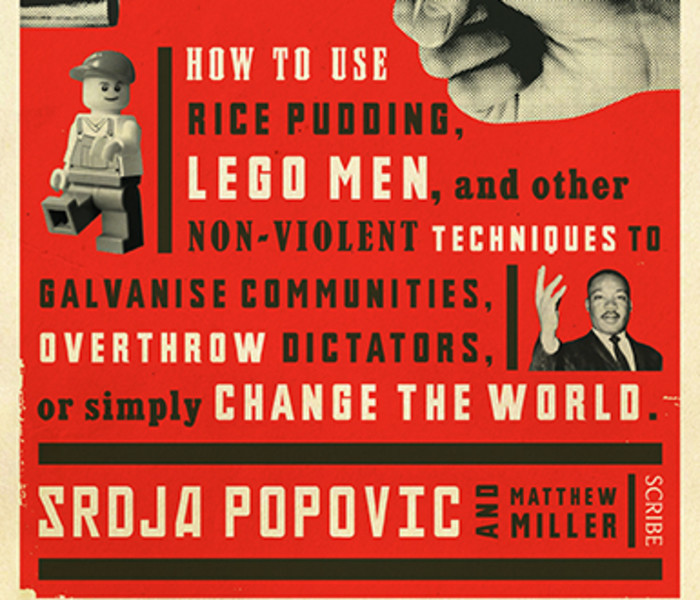2021 has begun on a confrontational note. There was the storming of the capitol building by Trump supporters, a long running farmers protest in India and a military coup in Myanmar. All this brings, the chapter on the Serbian revolutionary Popovic, from the book Originals by Adam Grant, to mind. Popovic and his team started the Otpor movement in 1998 and overthrew the dictator ruling Serbia through a series of non violent protests in 2004. One of the anecdotes in the book that stood out for me was when Popovic is talking to a group of tourists who ask him how they managed to overthrow a dictator. His reply is astonishing.
Popovic says revolutions are actually quite straightforward and can be triggered by trivial acts of nonconformity like throwing a bunch of golf balls on the streets, adding color to public water fountains and switching your lights on and off in the house. The idea is to initiate the ‘go system’ in people by A showing how bad things are and B displaying they are not alone in feeling it. This ‘go system’ in our mind is what assesses the risks with doing anything and decides whether to go for it. Getting people behind something is all about speaking to their ‘go system’.
Popovic has trained non violent revolutionaries in countries like Lebanon, Egypt, Syria and Poland. Popovic’s model for revolutions builds over simple psychological models. He explained how the Chilean miners stood against the dictator Pinoche in 1983 by starting a nationwide protest to turn their lights on and off. People were not afraid to do that from inside their homes and neither were their neighbours. Soon people realised that they were not alone in feeling angst against the dictator. This brought in a sense of psychological safety and they felt less of a threat in standing up.
 In his book Blueprint for Revolution, Popovic explains the motive behind these simple acts was to establish that people were not alone. When people see other people are also involved, standing up doesn’t feel that hard. It in fact feels like an act of conformity.
In his book Blueprint for Revolution, Popovic explains the motive behind these simple acts was to establish that people were not alone. When people see other people are also involved, standing up doesn’t feel that hard. It in fact feels like an act of conformity.
People also need to be shaken out of status quo by being made aware of how bad things are. This is built on the prize winning research on risk aversion by Kahneman and Tversky. When people perceive certain actions to be risky, they will only act, if they believe that the status quo is just the absolute worst. In other words, when people believe they are losing something important, they will do anything to prevent it, even if means losing everything else.
The other thing Popovic and his colleagues did, was replace fear with hilarity. They started campaigns making fun of the dictator via t-shirts, posters and a tv campaign. As these images gained popularity, fear died down. It is hard to fear something that you find funny. Effective display of humour is what Popovic called dilemma actions – choices that put the oppressor in a lose-lose position. In Syria, people wrote ‘freedom’ and ‘enough’ on ping pong balls and dumped them through the city. When people heard the sound of these balls, they knew the non violent movement was showing the finger to the dictator.
When Margaret Mead said “Never doubt that a small group of thoughtful, committed citizens can change the world: indeed, it’s the only thing that ever has.”, it wasn’t hyperbole. It is backed by some pretty solid data.
I would highly recommend you read Originals, especially the chapters on Popovic, any time you feel that we are all doomed and there is no hope for nonviolent protests. This applies to us even if you cannot join the protests for some reason. Offering your support is one of the most powerful things you can do. It makes people feel they are together. Don’t shy away from retweeting or sharing something you believe in, It is not a drop in the ocean. It makes the ocean.
I run a startup called Harmonize. We are hiring and if you’re looking for an exciting startup journey, please write to jobs@harmonizehq.com. Apart from this blog, I tweet about startup life and practical wisdom in books.